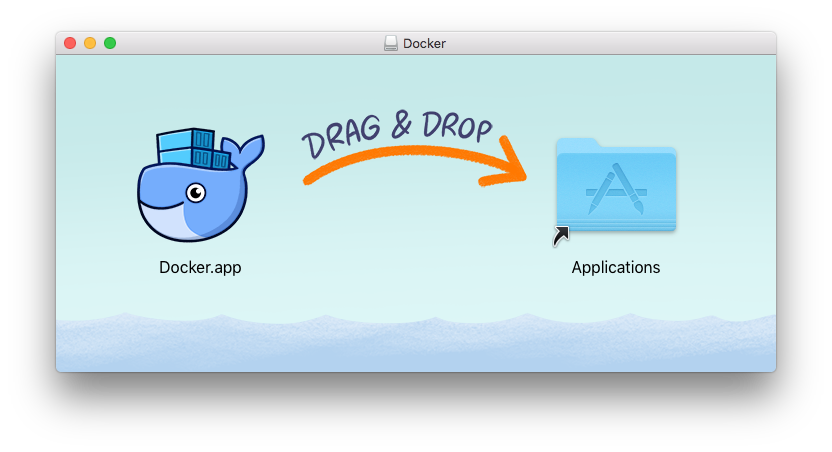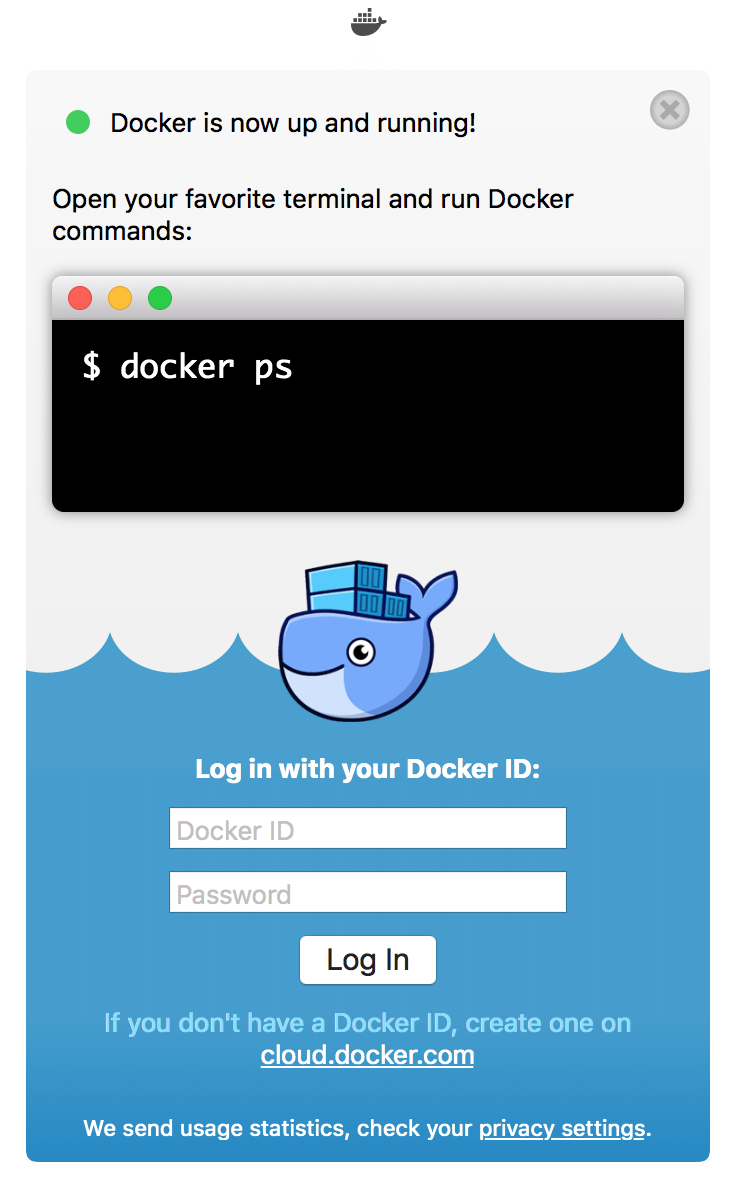Install Docker Desktop for Mac
Estimated reading time: 3 minutesTo download Docker Desktop for Mac, head to Docker Hub.
What to know before you install
README FIRST for Docker Toolbox and Docker Machine users
If you are already running Docker on your machine, first read Docker Desktop for Mac vs. Docker Toolbox to understand the impact of this installation on your existing setup, how to set your environment for Docker Desktop for Mac, and how the two products can coexist.
-
Relationship to Docker Machine: Installing Docker Desktop for Mac does not affect machines you created with Docker Machine. You have the option to copy containers and images from your local
defaultmachine (if one exists) to the new Docker Desktop for Mac HyperKit VM. When you are running Docker Desktop for Mac, you do not need Docker Machine nodes running at all locally (or anywhere else). With Docker Desktop for Mac, you have a new, native virtualization system running (HyperKit) which takes the place of the VirtualBox system. To learn more, see Docker Desktop for Mac vs. Docker Toolbox. -
System Requirements: Docker Desktop for Mac launches only if all of these requirements are met.
-
Mac hardware must be a 2010 or newer model, with Intel’s hardware support for memory management unit (MMU) virtualization, including Extended Page Tables (EPT) and Unrestricted Mode. You can check to see if your machine has this support by running the following command in a terminal:
sysctl kern.hv_support -
macOS Sierra 10.12 and newer macOS releases are supported. We recommend upgrading to the latest version of macOS.
-
At least 4GB of RAM
-
VirtualBox prior to version 4.3.30 must NOT be installed (it is incompatible with Docker Desktop for Mac). If you have a newer version of VirtualBox installed, it’s fine.
Note: If your system does not satisfy these requirements, you can install Docker Toolbox, which uses Oracle VirtualBox instead of HyperKit.
-
-
What the install includes: The installation provides Docker Engine, Docker CLI client, Docker Compose, Docker Machine, and Kitematic.
Install and run Docker Desktop for Mac
-
Double-click
Docker.dmgto open the installer, then drag Moby the whale to the Applications folder.
-
Double-click
Docker.appin the Applications folder to start Docker. (In the example below, the Applications folder is in “grid” view mode.)
You are prompted to authorize
Docker.appwith your system password after you launch it. Privileged access is needed to install networking components and links to the Docker apps.The whale in the top status bar indicates that Docker is running, and accessible from a terminal.

If you just installed the app, you also get a success message with suggested next steps and a link to this documentation. Click the whale (
 ) in the status bar to
dismiss this popup.
) in the status bar to
dismiss this popup.
- Click the whale (
 ) to get
Preferences and other options.
) to get
Preferences and other options. - Select About Docker to verify that you have the latest version.
Congratulations! You are up and running with Docker Desktop for Mac.
Where to go next
- Getting started provides an overview of Docker Desktop for Mac, basic Docker command examples, how to get help or give feedback, and links to all topics in the Docker Desktop for Mac guide.
- Troubleshooting describes common problems, workarounds, how to run and submit diagnostics, and submit issues.
- FAQs provides answers to frequently asked questions.
- Release Notes lists component updates, new features, and improvements associated with Stable releases (or Edge Release Notes).
- Get Started with Docker provides a general Docker tutorial.